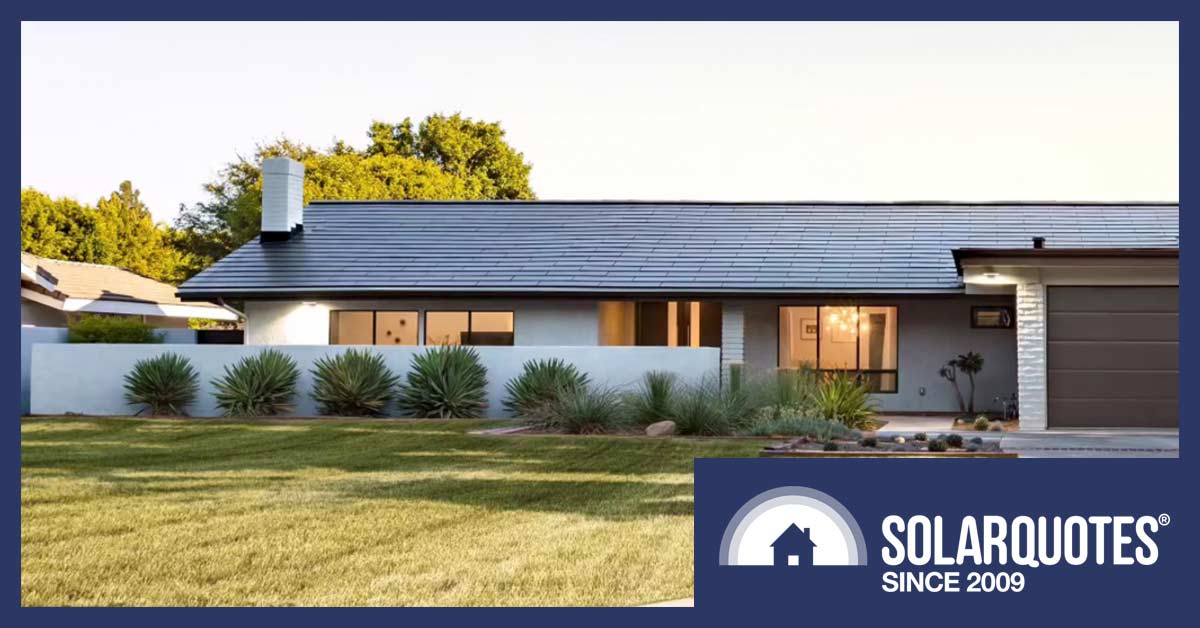
A Tesla Solar Roof. Image: Tesla
I recently attended the 2022 All Energy Australia conference in Melbourne. There was a lot on display, including some Building Integrated PV (BIPV) I hadn’t seen before.
BIPV is building material such as tiles, cladding and windows with solar cells built-in. The most famous example of BIPV is the Tesla Solar Roof, which is unavailable in Australia and pretty hard to get in the USA too.
As solar becomes normal on buildings, more owners are likely to consider BIPV as an alternative to discrete solar panels. So in this post, I’ll explore:
- Whether BIPV is worthwhile, and…
- Why it may take off in the future.
I also included some pictures of BIPV so you can see if it’s something you may be interested in next time you build a home or replace a roof.
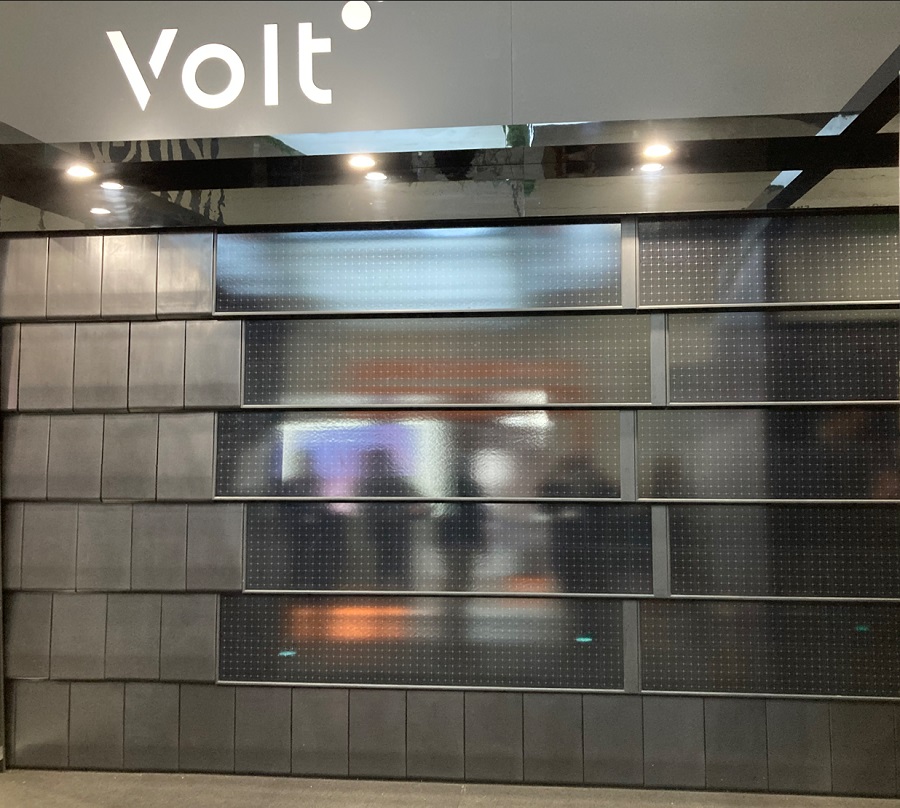
Volt produces these dark solar tiles. To me, they looked darker in real life in this photograph. But maybe the picture’s fine and I just have a dim view of the world.
BIPV Can Be Expensive
BIPV most commonly involves integrating solar cells with roofing material. But it doesn’t have to be roofs. PV solar siding can go on walls, and there are also windows that generate electricity from sunlight. But for most homes, roofs are where the action is. Well installed, solar tiles look great…
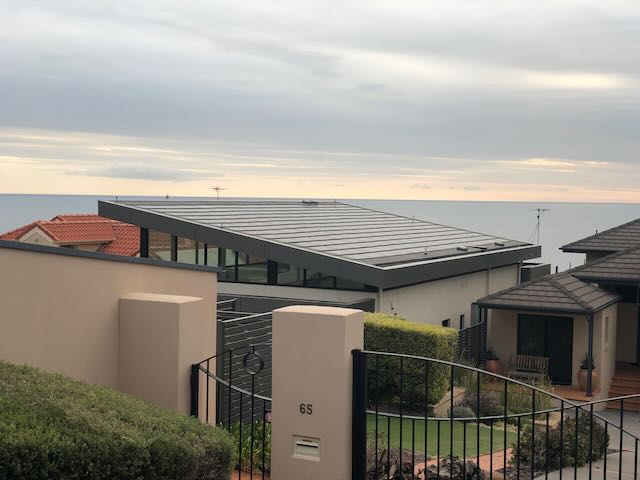
Tractile solar tiles in Marino, SA
But they are very expensive.
At this time, using BIPV is an aesthetic choice. You must be willing to pay extra in return for how they look.
The most cost-effective time to buy a BIPV roof is when you are building a home or replacing a roof. If you replace a perfectly good roof with BIPV, you’ll have to either be really rich or want it really badly.
Some questions you should consider before buying are…
- Will people be able to see it?
- Will people care?
- Will it work as well as a conventional solar panel system?
Will Anyone See It?
I know of installations where people paid extra for all-black solar panels that were then installed where no one could see them. As BIPV can cost much more than the best-looking solar panels, be certain it will make an appreciable difference to your home’s appearance.
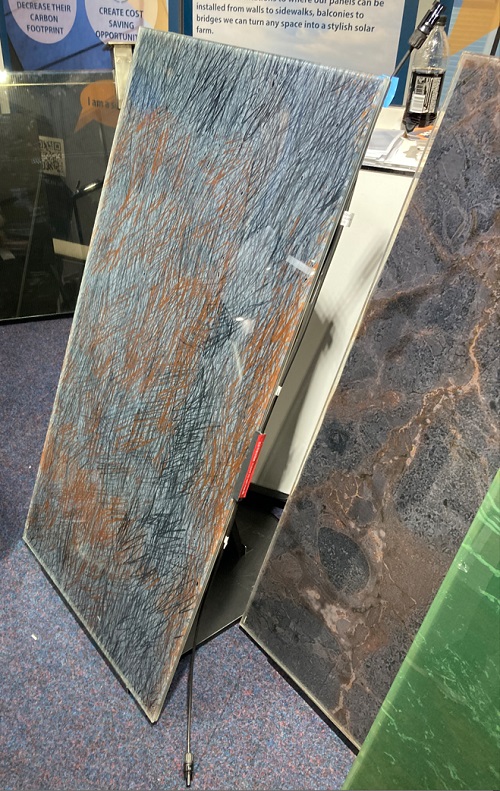
These solar panels look extremely funky. But this level of funkiness reduces efficiency by perhaps 15%. They’re also not BIPV, although they could be used for a patio roof. They’re also not currently available in Australia.
Will Anyone Care?
I find homeowners tend to be a little self-conscious about their roofs. Sure, a nice roof can improve the overall impression your home has on people, but the effect is usually going to be less than the stuff that’s at eye level. Hardly anyone cares whether discrete solar panels or stealthy solar tiles power your roof.
Will BIPV Work As Well As Solar Panels?
A few things to consider before getting a BIPV roof are:
- Could you install a larger system with solar panels?
- What are the warranties, and will you be able to get replacement tiles if required?
- Will it produce as much energy per kilowatt of PV capacity as a conventional system?
- Will they make your home hotter?
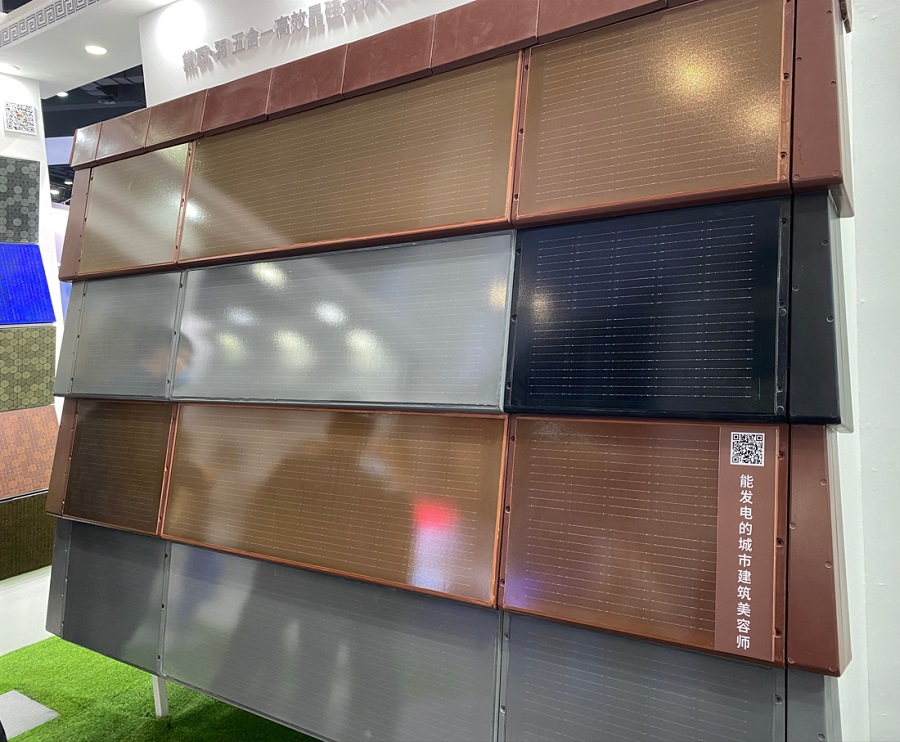
Lucy Xu of Wonergy sent me this picture out of the blue. I have no idea who Lucy is or what Wonergy is, but the name of her company has blown my mind. (Woah… nergy!)
Can You Go Bigger?
You might think if you make your entire roof BIPV it would produce more power than panels bolted on top. In reality, most solar tiles can’t cover 100% of the roof. You may get more kilowatts from your roof by installing high-efficiency solar panels.
Warranties & Replacements
Roofs often have warranties of 25 years. These days, there are many solar panels on the market with both product and performance warranties of 25 years or longer. But while BIPV will often have a warranty of 25 years as roof material, its product warranty as solar PV may not be as long. It could be only 10 years.
This means that after 10+ years, you may end up with a solar roof that still works well as a roof but isn’t doing so well on the electricity generation part. While I would expect solar roofing material to have a PV performance warranty of 25 years or more, making a warranty claim under the performance warranty may be more difficult than the product warranty.
A BIPV manufacturer going out of business can create problems. This is especially true if you need replacement solar tiles. If normal solar panels need replacing after a hailstorm and the manufacturer has gone out of business, it is possible to use another company’s panels. But if no one makes your solar roofing material anymore, you could have a serious problem. You may find keeping some spare tiles on hand a worthwhile precaution.
System Efficiency
BIPV is typically less efficient than high-quality, modern solar panels. If a solar tile is anything other than black or a dark bluish-black, it will have lower efficiency. Making them any other colour will reflect some light and reduce output. The loss is likely to be around 15-20%. BIPV efficiency can also lag behind if the manufacturer doesn’t use the latest solar cell technology. While normal panel manufacturers focus on increasing efficiency, the makers of solar tiles may not have the resources to keep up.
Heat can also be more of a problem for BIPV. Standard solar panels are installed on rails that raise them off the roof. This allows air to circulate underneath and cool them. This can’t happen with solar roof tiles, and so they tend to be slightly hotter under identical conditions. Hotter cell temperatures mean lower efficiency. This may only reduce their output by a couple of percent, but it’s still something to keep in mind.
BIPV Can Make Your Home Hotter
Because they’re raised, conventional solar panels will shade your roof and make your home cooler than it would otherwise be, reducing the need for air conditioning. Because BIPV doesn’t have this effect, it can increase your home’s energy consumption. If the non-solar parts of your roof are dark to blend in with dark PV tiles, the effect can be particularly strong.
BIPV May Be Big In The Future
At the moment, you can expect to pay much more for a BIPV roof than for a standard roof plus a standard solar system. But prices could — and should — come down in the future. Combining solar PV and roofing material can provide several cost advantages:
- BIPV allows roofing material and solar cells to share the same structural strength. As it no longer has to be provided separately by the solar panel, it reduces the total amount of material required and therefore the cost.
- It completely eliminates the need for railing, clamps, and other hardware used to attach solar panels to roofs.
- Because the solar is installed along with the roof instead of separately, it could reduce installation costs. But only if the solar tiles are very easy to install.
Unfortunately, there are also several factors working against BIPV falling in price. These include…
- Conventional solar panels are very standardized. Standardization has not yet occurred with BIPV, and there are many types of systems on the market. Working against standardization is the fact roof construction varies around the world due to climate and tradition.
- Roofers are not solar installers or vice versa. As roofers have little interest in installing solar and solar installers generally aren’t interested in building roofs, this slows the uptake of BIPV.
- There is a principle-agent problem. Builders normally focus on getting construction done and moving on to their next job. They are generally not focused on installing a solar power system that will best meet the needs of whoever moves in. Owner-builders knowledgeable about solar energy may be able to overcome this problem.
- Standard solar panel manufacturers and standard roofing material manufacturers both focus on producing low-cost, reliable products on a massive scale. For the near to medium term, BIPV is likely to miss out on economies of scale.
Because of its obstacles, I suspect it will be years before BIPV takes off. While it will improve and fall in price, conventional solar will do the same, so the competition will be a moving target.
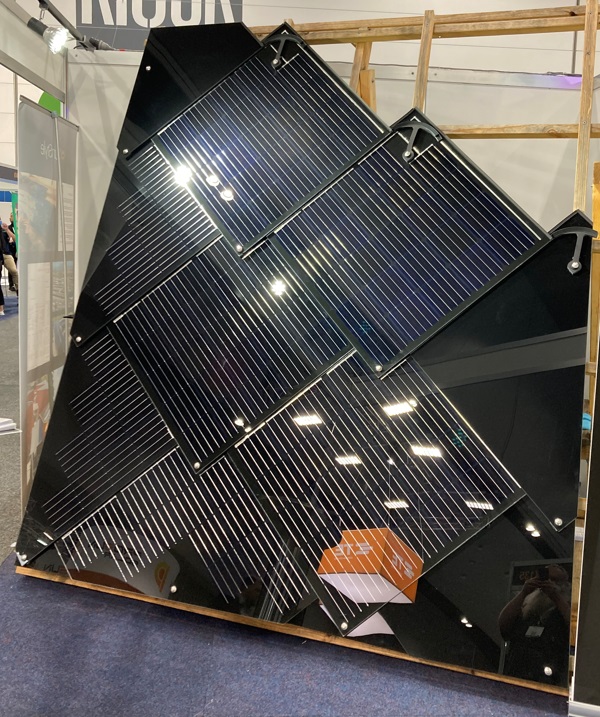
These Dragonscale tiles from SunStyle are my personal favourite, so I’ll write at length about them in the future. (I also included a selfie of myself in this photo — or possibly Santa Claus.)
So, Should You Get Solar Tiles Instead Of Solar Panels?
If you:
- don’t like the look of solar panels
- are replacing a roof or building a new house
- are happy to spend more than conventional panels + new roof
- are happy you can get enough kW with current technology
- and are prepared to carry your own spares
- understand you can’t upgrade or replace your solar system without a new roof
Then go for it.
And send me a picture.

 RSS - Posts
RSS - Posts



I used to have shares in a company called Sustainable Technology Australia, who were doing some work on generating electricity by using doped glass window panels. Whatever happened to them? Lost my money.
I have always considered that Solar roofs have a future, but can see some potential problems. The main one is in the life of a building, if a panel fails, will it be replaceable? We have seen PV Panel sizes change in the last few years, so considering that a building roof might be in place for 50 years +, how will you replace a damaged panel if they are nla?
I think the panels mounted over a roof will be here for some time yet, but one thing I have always wondered is why we set the rails up horizontally? The problem I see with Horizontal rails is they can be a leaf trap. I think if the panels were installed in landscape, with the rails vertical, there would be more air circulation under the panels, so the cooling might have a positive effect on output. Also dirt & leaves would be easier to clean. The other thing panel manufacturers could consider would be be a gap-free installation. If the panels had a tongue & groove, with a rebate on the underside, it should be possible to have a gap free installation. This would add about 1% to the potential panel coverage. (Great for carports too!)
btw, I know Vertical rails use more rail, but for panels in landscape mode, the difference is relatively small.
The other thing that could be considered is a rail-free installation. If the rolled roof profile was changed so panels could clip to a modified rib on a tray style roof, installation could be greatly simplified on new buildings.
As most roof locations for PV are long not deep then if the rails go vertically you need many more rails & attachments to the roof.
So the cost goes up…
I put Klip Lok 700 decking on my new build. Clenergy and Sunlock make matching clips, so no penetrations for roof or array fixing. The pitch limit for the Sunlock clips is 40 degrees, so that’s the roof pitch, good for our 38 degrees south latitude.
The clips must be attached over the roof attaching clips under the sheeting for structural rigidity. That probably predicates vertical rails. On top of the decking ridges, leaf clearance at 40 degrees might then be OK. We’ll see if additional horizontal rails are needed to stop the 22m array width swaying on top of the rails on top of the ridges. But they’ll be well up off the decking trays.
I’m starting to eye the 120 volt Selectronic battery inverters, as a big off-grid array needs a wide-mouthed energy sink (or three), and 120v takes 2.4 times the energy at the same battery charge current, compared to 48v.
(No issue with Zenaji LiTO batteries, but something a bit more budget friendly is needed for a big battery. And LiFePO4 has a narrower mouth.)
By the time the LiFePO4 batteries give up, even the new Na-ion technology may have been replaced by something even better.
Looking here…
https://connectonline.asic.gov.au/RegistrySearch/faces/landing/SearchRegisters.jspx?_adf.ctrl-state=876jndm11_4
I see a company with that name was deregistered back in February 2009. So if that was them, it looks like they are long gone. I don’t know anything else about them, sorry.
A recent example of what temperature difference changing the roof colour can make.
Trying to prolong the life of a failing asphalt shinge (think dark grey) roof, I first coated it with an asphalt emulsion. The temperature in a mezzanine storage area went up about 5 to 7 degrees C when the air temp was around 25 tp 27. It became a sauna.
When I painted the top coat (87% reflective index) the temperature dropped to below the external air temperature.
I was trying to make it last until the Tesla tiles became available. This was in 2018. Hundreds of hours of attempts over 2018 & 2019 as new leaks developed, I finally gave-up & went for the very light coloured high reflective roof.
The experience of the heat differential from grey to dark grey/black to cream was causing me to wonder whether PV tiles combined with similarly dark non-PV tiles for much of the roof area are really such a good idea or whether the increased heating of the house may indeed offset much of the extra generation vs simple PV panels.
Can certainly relate to that!
Primary Schoolboy science taught me how important colour is. We put a new white (“surfmist”) colorbond roof on our house in 2012 which replaced green tiles.
The temperature difference was absolutely massive, and reduced the need for aircon in warmer months very dramatically.
Yet look at most new estates, and new houses replacing old around us- black and dark grey roofs are the vast majority- insane!
It also causes heat island effect and warms the environment for all of us.
In the past one could buy a Landrover with a Safari Roof, a second roof several inches above the first, open all round. Especially when driving, it was much cooler than a single roof. Solar panels would seem to go one step further by diverting 20% of the insolation as electricity. In comparison, lower efficiency, lack of a shading layer, risk of tradie foot damage, and need to put ordinary panels over the top anyway the day it goes bung, seem to make solar tiles a problem masquerading as a solution. A programming (tongue in cheek) dictum comes to mind:
(5) It is always possible to agglutinate multiple separate problems
into a single complex interdependent solution. In most cases
this is a bad idea. RFC-1925
Just consider:
“I have to rip off my roof and replace it.”
“Why? It’s only a year old.”
“Lightning strike next door. The tiles are fried.”
That doesn’t happen with terra cotta.
Some additional factors for PV roof tiles –
WALK ON
Tradies will walk over your roof as well as your thin pergola without batting an eyelid. There are plenty of examples of tradies – muscular or the opposite – that weigh over 100kg. Owners need to be able to retrieve the odd tennis ball that got hit for six, too.
Do BIPV roof tiles include warranty for folks walking over them? They kind of need to be able to handle such weight, I would have thought.
IDENTICAL FAUX TILES
I understand that corner shapes and other roof area unsuitable for PV use “faux PV tiles” from the same supplier (i.e. have the same look but aren’t PV). Hopefully these are reliably identical at time of install, but it also strikes me they also need to age identically to the PV tiles.
GRACEFUL FAILURE
TV aerials, Starlink and other dishes; more than a few reasons a roof needs a hole punched through it. Presumably these just need to be planned ahead as a faux tile. But worst case if a tradie decides to drill through a real one, how does roof PV handle catastrophic failure of a tile?
STANDARD PV + NON-STANDARD SHAPES
Lastly, if aesthetics are such a big factor, maybe compare the cost difference with shelling out for a bit of extra rail + panels + (if available) filler panel shapes, to make a standard PV roof install look a lot less patch work. Over supply of solar at the outset can also cater for the drop in efficiency over time that all PV has to deal with.
Some very good points there. Anyone doing work on the roof will need to be warned about the BIPV and told not to walk on it — unless it is actually safe to do so.